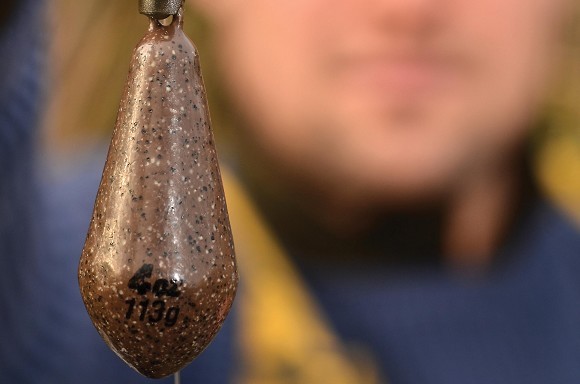
Does lead type and lead size matter?
We ask four experts whether different leads really make a difference...
Does the size of lead and the lead arrangement (helicopter, safety clip, in-line) you use differ greatly from situation-to-situation and if so, what are the key elements which dictate those changes: distance, lakebed, angling pressure?
James Armstrong
"I prefer a real heavy lead"
“Most of the time I use a heavy lead. I feel that a fish finds it far harder to deal with, especially when coupled with a sharpened hook. Try placing the hook on your finger and lift up a 1oz lead… it’s easy and won’t penetrate your flesh very much. Now carefully try it with a 4oz lead, you won’t be able to do it unless your skin’s made of leather! My leads will always be mounted on a system where they can be discharged too. You don’t want a 4oz lead swinging around whilst playing your prize.
“Times when I may use a lighter lead are in weed, flicking light Chods into weed for example. Or sometimes when fishing in silt or at showing fish.”
Rick Golder
"It varies on the situation"
“I try to use as light as lead as I can, as my favoured helicopter set-up and rigs don’t rely on the lead for hooking power. Generally I use 1.5-2oz which I can still get out to 80-plus-yards. The helicopter method gives the best separation from the lead to hookbait and also better feel on hitting the bottom when looking for a drop when silt fishing which is where I do most of my fishing.
“The only times I deviate from this is to use a lead clip and tubing arrangement for ultra long-range, coupled with big 3-4.5oz leads, which I find fly the best and is the most tangle-free and they are good for lead discharge.
“I also like using the in-line drop-off arrangement when fishing in the margins on gravel spots with bottom baits; I go as big as 5oz, as this really engages on the take.”
Lewis Read
"Lead clips all the time now"
“I’ve used lead clips more this year than ever before! In the summer I somehow found myself occasionally visiting a wonderful, heavily-featured venue in the Colne Valley where it definitely seemed to help losing the lead (the bars really are quite savage in places). Then, for some reason – mainly laziness – I left them on and found that the efficiency of my rigs improved on Welly with a lead clip too – so I have kind of just stuck with them. There was a time I really didn’t like lead clips much, but by using one of our (Gardner) size 12 Target Lead clips and choosing leads with a lead loop ‘just big enough’ to go on the lead arm without a swivel, I have reached a point where I am really happy with the mechanics. Little movement on a hard lakebed and instant resistance when it’s ‘plugged’.
“I amend the rigs to suit the lead arrangement anyway, and as most of the fishing is in the silt I’ve been incorporating nice soft Ultra Skin hooklinks and boom sections with the Target and it’s all worked really nicely.
“At first it seemed like it was all a bit retro – like a step backwards – but it’s more a case of tried and tested and almost foolproof. The only time I have changed really is when I’ve been chucking longer and then I have reverted to mono hooklinks with a helicopter style lead arrangement so I can give it the max.”
Craig Mortimer
"As light as possible"
“So many factors come into play when choosing the lead shape, size and lead arrangement. Wherever possible, I will choose the lightest lead that I can get away with. The lighter the lead is, the less disturbance it will make when I’m getting the rig in – and it’s paramount not to spook any fish that may be in the area. Of course the counter to that is when big distances are needed to be achieved – then the lead size naturally increases.
“The only time I will use a very heavy lead for fishing close in is when the hookbait can be lowered straight onto the spot or positioned with a baiting pole – after all, there’s nothing like a big 5oz drop-off in-line lead to help drive that hook home.
“If I had to call a preferred lead arrangement, that would be the helicopter set-up due to its superior casting and anti-tangle properties. However, on weedy waters I will always revert to a trusty Covert Lead Clip system, as ensuring the lead is always dumped on the take helps with a better landing ratio.
“So: although there’s a variety there, the general rule of thumb will be a light lead for a lot of my fishing, for those weedy lakes and soft lakebeds they work great; and for harder bottoms I wouldn’t hesitate putting a heavier lead on if needed.”




